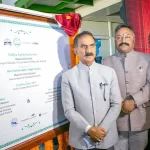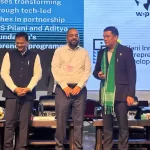There always exists a debate on the different types of teaching-learning models as to which is better, but in my opinion, it comes down to what works for you and your learners. With the changing world dynamics and learner preferences, each learning model has its benefits and drawbacks.
The debate of “which learning style is better” is starting again, especially recently, post-pandemic, with educators and learners returning to on-campus education. During the pandemic, the world experienced fully digital or remote learning in contrast to traditional learning and hybrid learning – pre-pandemic. With this experience, learners, as well as educators, have developed strong opinions about which learning model is better.
The hybrid learning model brings together traditional classroom instruction with online learning. Students actively engage in conventional physical classes during school/college hours and also have the option to learn remotely at other times.
Remote/Digital learning is education done entirely online, where students learn digitally through online courses, video conferencing, and other distance learning technologies. While beneficial in some ways, it came with many hurdles for those who are used to the traditional teaching-learning model.
Research by KALTURA on the state of videos in education states:
- Active video usage is still in its infancy; still, 95% of respondents said that some students make or integrate video in their work, and 13% said that more than half of students do so.
- According to 66% of respondents, using video for remote instruction or learning is now typical in higher education, and 46% of respondents believe that flipped classrooms are becoming a popular pedagogical approach.
The same report also suggests increased student engagement and satisfaction with video integration compared to text-based content.

Another report investigating the effectiveness of hybrid learning on academic achievement states that the effect of hybrid education on students’ achievement is statistically higher.
Considering this data, it is a no-brainer that educators and learners want to become immune to a teaching-learning halt like the one brought about by the 2019 pandemic. Most teachers and learners prefer hybrid learning over purely traditional or digital learning models.
Though the hybrid learning model has existed ever since, today, the online learning component is getting special attention. With more and more teachers and learners opting for the hybrid model, it is essential to make the model even more robust, especially for the online learning element, as this is something that is driven by tech.
Video content is a crucial part of digital learning for both hybrid education and remote learning. At Boclips, we specialize in offering top-quality educational video content that fits your teaching-learning needs, and you don’t have to worry about its licensing, tech, streaming, etc.
We have been working in the space since 2013, and during our journey, especially pre- and post-pandemic, we have seen a significant shift in “how videos are consumed”. Not just that, but we have also seen a major shift in the kind of video that educators and learners are consuming – long format, short format, microformat, animation-based, illustration-based, narration-based, etc.
As remote and hybrid learning becomes more and more prominent, we have been keeping up with the change. Irrespective of the learning model being used, we have seen the following as some of the most common challenges learners and educators face due to the changing education dynamics.
Let us also look at how Boclips is solving these challenges by constantly adapting to change through research and innovation, and how we are leading the evolution of “video based learning.”
Lack of Content Correctness and Standardization
Boclips ensures content accuracy and scope coverage by offering a curated library of copyright-cleared 2.5M+ educational videos, promoting standardized and reliable resources for diverse learning needs.
Lack of Quality Resource Management
Boclips combats issues of content sourcing, piracy, and unofficial materials by providing a platform that focuses on high-quality, licensed educational content from 550+ Global brands.
Lack of Content Accessibility
Boclips enhances content accessibility by offering a platform that allows both online and offline access to educational videos, ensuring flexibility in learning environments with or without internet connectivity.
Lack of Interoperability Across Devices and Platforms
Boclips promotes interoperability by designing its platform to seamlessly integrate with different devices and Learning Management Systems (LMS), providing a versatile and user-friendly learning experience.
Lack of Tracking Capabilities
Boclips addresses the need for tracking by incorporating features that enable monitoring of video content consumption, completion, and interaction, empowering educators with valuable insights into student engagement.
Lack of Flexibility and Personalization
Boclips supports flexible and personalized learning experiences by offering diverse educational videos catering to various learning styles and preferences.
Lack of Access to Global Resources
Boclips bridges the gap by providing access to a wide array of global educational resources, exposing learners to a rich and diverse pool of knowledge worldwide.
Lack of Support for Learning Disabilities
Boclips promotes inclusivity by offering content that supports different learning abilities, making educational materials more accessible and accommodating for students with diverse needs.
Lack of Engagement and Motivation
Boclips addresses the challenge of engagement and motivation through its engaging video content, fostering a dynamic and interactive learning environment that captivates students’ interest and enhances their motivation.
Video based learning is growing in day-to-day classrooms and is here to stay, so it is crucial to identify and mitigate challenges. Educational institutions, educators, & training/teaching businesses cannot afford to be challenged by such hurdles when today’s learner is always looking for top-quality learning experiences.
Boclips is the world’s largest library of Ed-Ready videos that offers an academic collection of curriculum-aligned videos to enrich learners’ daily journeys. Trusted by over 200 customers, Boclips offers a plethora of videos from more than 500 of the world’s most loved and trusted brands.
or learn more about Boclips here.
Also Read: Why Getting the Right Content in Front of Learners Is Not That Easy

